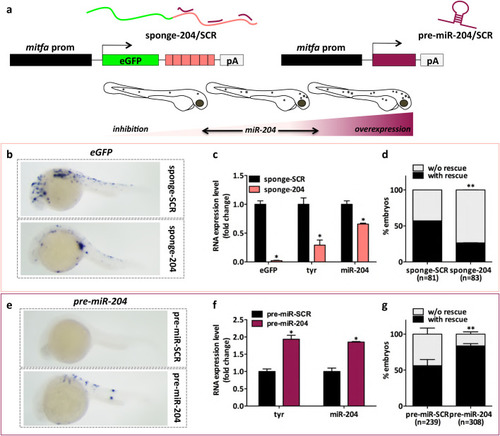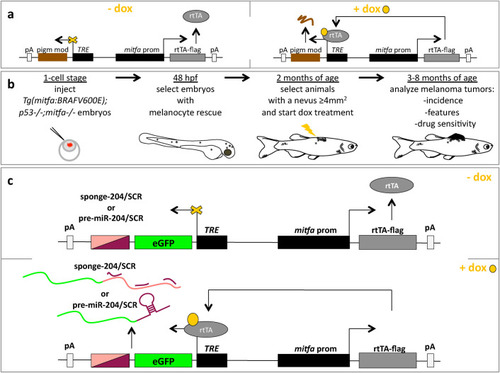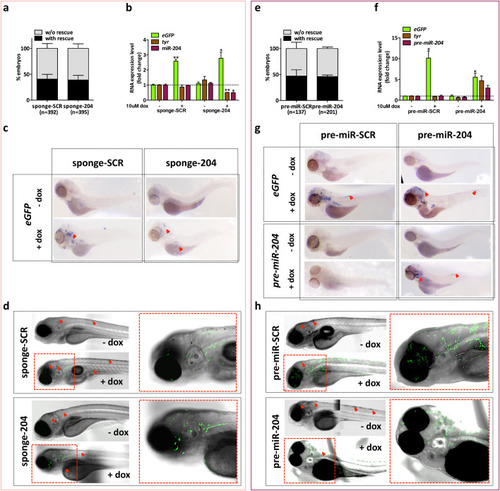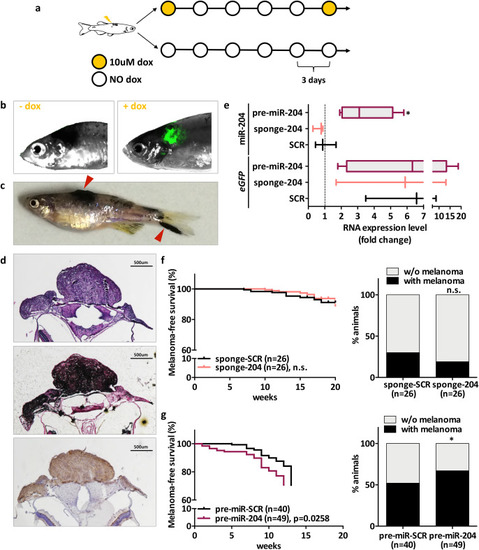- Title
-
Inducible modulation of miR-204 levels in a zebrafish melanoma model
- Authors
- Sarti, S., De Paolo, R., Ippolito, C., Pucci, A., Pitto, L., Poliseno, L.
- Source
- Full text @ Biol. Open
|
The constitutive modulation of |
|
|
|
|
|
|




